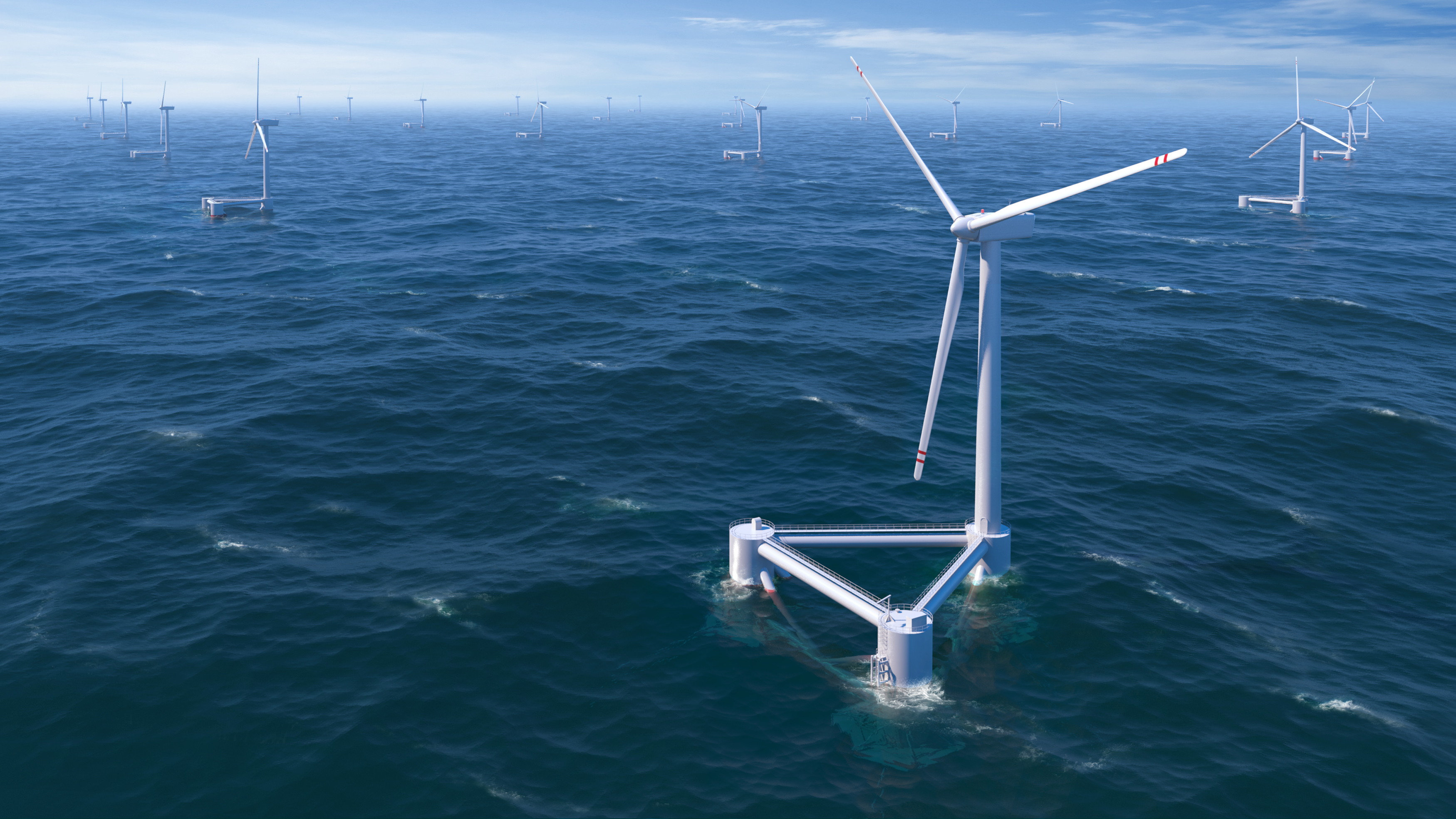DOE Grants Try to Crack the Code on Offshore Wind
The Department of Energy hopes to unlock some of the United State’s offshore wind potential by demonstrating emerging wind technology.

The DOE yesterday announced a grant program where seven projects will receive $4 million to do the initial design and testing of direct-drive turbines and new types of foundations for offshore use. After this first phase, the DOE intends to give $47 million to three of the projects, which is subject to Congressional approval. The hope is to have demonstration-scale offshore-wind farms operating by 2017.
The U.S. has a massive offshore wind resource. The DOE released a study estimating there is 4,000 gigawatts available, which is four times the country’s current generating capacity. But to date, no offshore wind farms have built in the U.S. In Europe, meanwhile, there are 56 offshore wind farms with over 1,500 turbines and 4.3 gigawatts of capacity as of June last year, according to the European Wind Energy Assocation.
Cost is one of the biggest barriers to offshore wind in the U.S. Because of the complexity in constructing and operating in water, the cost of offshore wind is about twice that of terrestrial wind turbines. And because it’s a new industry, there are a number of permitting and regulatory barriers, which require years of work. Proposals to make offshore wind turbines off of Cape Cod and Rhode Island have been approved but not yet built.
The DOE’s grants in Texas, Maine, Oregon, Virginia, New Jersey, and in Lake Erie, seven miles from Cleveland, Ohio are focused on demonstrating the use of direct-drive technology for power generation. These turbines, already in use in Europe, have simpler maintenance and improve reliability compared to traditional turbines.
Critical to offshore wind are the foundations used to support these giant turbines, the largest of which have towers over 200 meters high. Deeper waters typically have better winds, but transporting and installing a foundation is significantly harder than shallow waters.
In one project, Principle Power will install five 6-megawatt wind turbines on its semi-submersible floating foundations in deep water ten to 15 miles off the coast of Oregon. Final construction of the foundation can be done offshore, brought out to sea, and anchored to the ocean bottom.
The DOE grants should help demonstrate the costs and viability of emerging offshore wind technologies. There’s no question that it’s a resource with lots of potential. But capturing it will take a multi-year, methodical approach to testing and demonstrating these technologies at scale.
Keep Reading
Most Popular
Large language models can do jaw-dropping things. But nobody knows exactly why.
And that's a problem. Figuring it out is one of the biggest scientific puzzles of our time and a crucial step towards controlling more powerful future models.
The problem with plug-in hybrids? Their drivers.
Plug-in hybrids are often sold as a transition to EVs, but new data from Europe shows we’re still underestimating the emissions they produce.
Google DeepMind’s new generative model makes Super Mario–like games from scratch
Genie learns how to control games by watching hours and hours of video. It could help train next-gen robots too.
How scientists traced a mysterious covid case back to six toilets
When wastewater surveillance turns into a hunt for a single infected individual, the ethics get tricky.
Stay connected
Get the latest updates from
MIT Technology Review
Discover special offers, top stories, upcoming events, and more.